Decluttering, rearranging furniture, cleaning, and making minor updates are all tips and tricks of the trade. To help you put the finishing touches on your own home, we’ve collected some of the top tips from experienced stagers. Get the inside scoop on the tricks the pros use to help homes sell quickly— and for more than the asking price.
Conquer the Clutter and Dirt

De-cluttering—and having a pristine home from top to bottom—are the no-brainers that can make your real estate look better than the house down the block. Your home must be cleaner and less cluttered than it’s ever been. You need to banish not just the day-to-day buildup (the mail, the shoes, last season’s clothes, the dog hair), but also several years’ accumulation. Steam clean the carpets, clean or repaint the walls—and store, sell, or give away anything you can. Then you’ll have a bare canvas you can really spruce up.
Crank Up the Curb Appeal
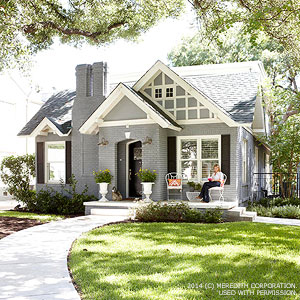
There’s no way of getting around it: the front of your home is the first thing prospective buyers see, so you’d better make it beautiful. Good home and yard maintenance is a must, but focus on a few hot spots too: a freshly painted front door, gleaming hardware, and a few beautiful potted plants make a great first impression. Take a hard look at any fencing you have in the front yard. That picket fence may have been a necessity when your kids were young, but it may be cramping your home’s style now.
Do a Walk-Through

Our homes are so well-used that we rarely take a moment to really look at them. Stand in the doorway of each room in your house and try to view the space as if you’d never seen it before. You’ll not only notice what needs a good cleaning, but you’ll also be more likely to spot what could be removed to make the room look bigger, and what you might do to make the room appear more inviting or versatile. Could that solid door be replaced with a French door for more light? Would new hardware modernize your kitchen cabinets? Could a new vanity upgrade your bathroom? Would replacing your floral bedspread with something more neutral make the room more sophisticated? Some simple changes can make a huge difference when it comes time for buyers to tour your home. Also look at the room flow on the ground floor. There should be a pleasing connection between rooms—similar colors and styles in the living and dining rooms and kitchen.
Focus on the Foyer

Most prospective buyers enter your home through the front door, so that’s a prime spot to make some improvements. Apply a fresh coat of paint if it’s looking dingy, eliminate or hide all clutter (mail, shoes, keys, newspapers), and clean out the coat closet so that it looks more spacious. Then pick one thing that you could upgrade in this area. Add a new hanging light fixture or replace that Civil War painting with a large mirror. Maybe it’s time to replace that old bowl of potpourri with a simple, fresh floral arrangement or a stack of design books with an ornamental accessory on top. The look that greets visitors to your home should be simple and sophisticated.
Hike the Versatility
New buyers won’t necessarily want a pink girl’s room or a whole room devoted to sewing. Paint gender-specific rooms in more generic colors, and reduce the “kid’s room” effect by storing large collections, posters, musical instruments, and personal items. Turn that sewing room into a more general-use guest room with desk or table space for projects (hide away the project materials). The more versatile your home, the more buyers will be able to see themselves living there. They may want your playroom to be a home office or gym; help them see the possibilities.
Expand Spaces Visually
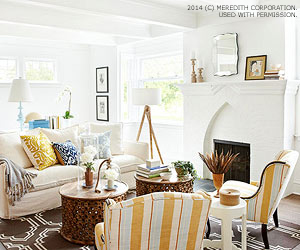
Dark wall color can make a room look smaller; focus on lighter neutral tones. Float furniture (pushing it against the walls actually makes the room feel smaller) in logical conversational groupings, with enough space for people to move between pieces easily. Make sure large pieces of furniture don’t block sight lines to a great view or a pretty focal point, such as a fireplace. Stagers suggest that rugs stop a foot or two from walls. A rug that’s too big shrinks a room; if it’s too small it just looks awkward. If your dining room is modest in size, take extra leaves out of your table and limit chairs to four.
Go for the Odd Number
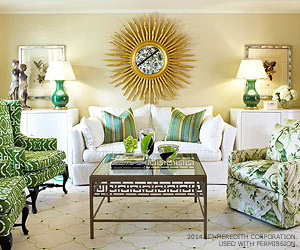
After you’ve edited your accessories to the bare bones, show them off the right way. Most interior decorators will tell you that odd-numbered groupings can be very effective. When organizing vignettes of accessories, vary the shape, color, and size and don’t line them up. For example: hang a large landscape above a table where there’s a lamp and a plant, or group a collection of candles of three different heights on the mantel. Less really is more. A few well-chosen items—one pillow on the couch, three well-framed prints on the wall—show off your good taste without overwhelming the potential buyer.
Let There Be Light
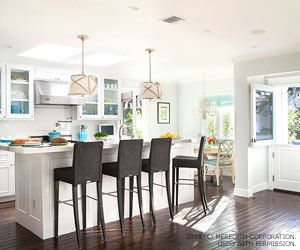
Nothing is more of a turn-off than a dark home—and nothing is easier to fix.
- Rule number one: Wash all of the windows so natural light can fill the space.
- Rule number two: Replace dark window treatments with light gauzy ones.
- Rule number three: Layer the light in your home. Experts say there should be at least 100 watts for every square foot of space, and well-staged homes have overhead lights, floor lamps, and task lighting (for reading, cooking, etc.). One trick: wall sconces can uplight walls or ceilings, making rooms look bigger. Freshen up any built-in lighting with new switchplates and dimmer switches.
Dress the Set
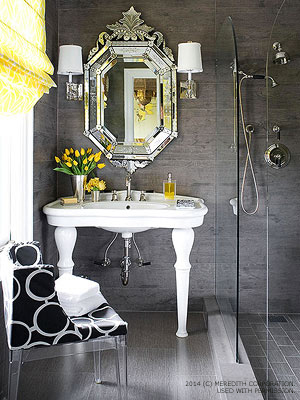
What are those last-minute things you can do that make a difference? Make sure your fridge is clean and kitchen cupboards are organized. Throw away kitchen sponges and put away dirty dishtowels and mops and brooms. Place a floral arrangement (something without a strong fragrance) in your foyer and on the dining room table. Empty all wastebaskets and take out all garbage. Replace bar soap with liquid soap dispensers in all bathrooms, and put out clean, pretty towels. Make sure your doormats are clean and presentable. Sweep your front porch and sidewalk.
Adapted from Better Homes and Gardens. Used with permission. © Meredith Corporation. http://www.meredith.com. All rights reserved.



